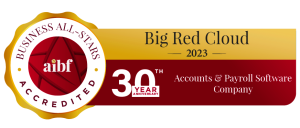During the beginning stages of your startup, and during times when sales are on the lean side, you may find it difficult to get your business expenses paid. You are tapping more and more into your positive working capital to keep your business afloat. While this process is working fine now, you are starting to worry about paying your debt obligations. You don’t want to become dependent on this type of answer to keep your business running when you would rather use the working capital toward growing your business operations.
Tips to optimising your working capital
Every small business can go through its own set of growing pains. Unfortunately, for many, the first port of call is to seek financing through bank loans, cashing in retirement benefits or even putting your house up as collateral to tap into its equity. While financing can help your business weather through the rough sales season as your busy establishing your new business reputation, it shouldn’t always be a go-to option every single time your business goes through financial problems.
Use these 7 tips to optimise your working capital so you are better managing both your assets and liabilities.
1. Invest smartly in operations
Currently, you may be placing your working capital in the wrong areas of your business. If you are spending everything in production processes and very little in marketing and sales, you are not going to generate new customers who will increase your cash flow. Take a close look at your business and place the funds into the ideal areas that will give financial benefits.
2. Eliminate wasteful spending
It may seem that spending money to fix equipment is cheaper than purchasing or leasing new ones. Yet you could be spending too much for repairs to keep a failing piece of equipment that could be hampering your productivity. Sit down and go over your financial numbers. You may find that the initial equipment purchase price and long-term ROI is more cost-effective than constantly repairing old equipment.
3. Avoid overstocking in merchandise
It’s great that you want to offer a wide variety of products to customers. Yet there are dangers in overstocking in goods that will sit on shelves for long periods of time. You end up increasing your holding costs, as well as having obsolete items that you can’t sell later. Better management of stock operations and engaging in just-in-time inventory strategies can lessen the amount of working capital spent on merchandise.
4. Outsource certain operations
Outsourcing certain aspects of your business may lead you to cut costs and allow your employees to concentrate on being productive in other areas of your business. This strategy is also ideal if you operate a small business with limited staff that doesn’t have working knowledge or skills to effectively work in specific business departments. You can outsource operations such as sales, customer service, accounting or technical support.
5. Make debt arrangements with creditors
You can free up more cash flow if you take charge of your debt obligations. Making timely payments prevents penalties and paying extra interest. Most creditors will work with your small business to come up with the right payment arrangements, such as extending payment terms or making other payment arrangements.
6. Get more accurate bookkeeping reports
A major problem in tracking working capital is that you simply are not getting the data required to make accurate reports. You have no idea where the money is being spent. Streamlining your accounting department and having an accountant go over your ledgers can reduce inaccuracies and help you make better business decisions. Having your accounts software in the cloud is really handy as you can talk with your accountant over the phone while you are both looking at the same set of accounts.
7. Have better collection procedures
Don’t just sit and wait for the money to come in from your clients and customers. Ensure invoices are paid on time and in full. Send payment reminders and work to get late paying clients on a better payment schedule. While offering discounts to fast paying clients is another option, ensure that you aren’t giving out too many discounts that can negatively impact your cash flow.




